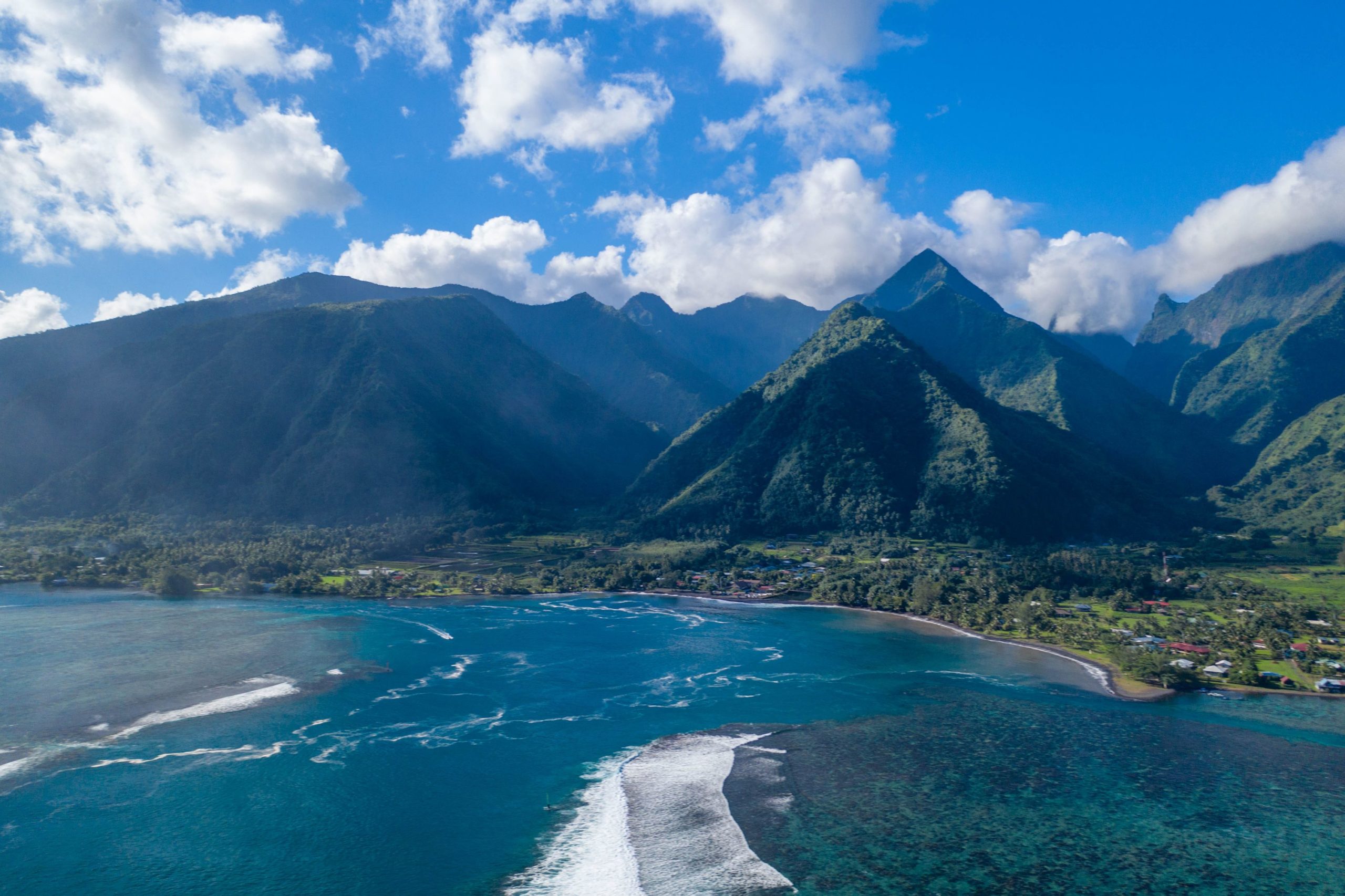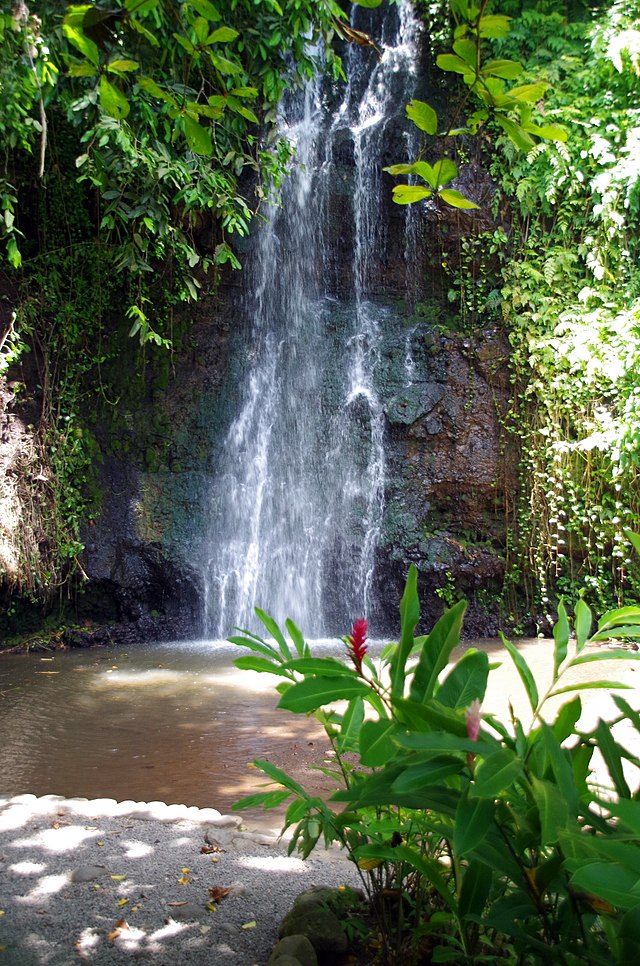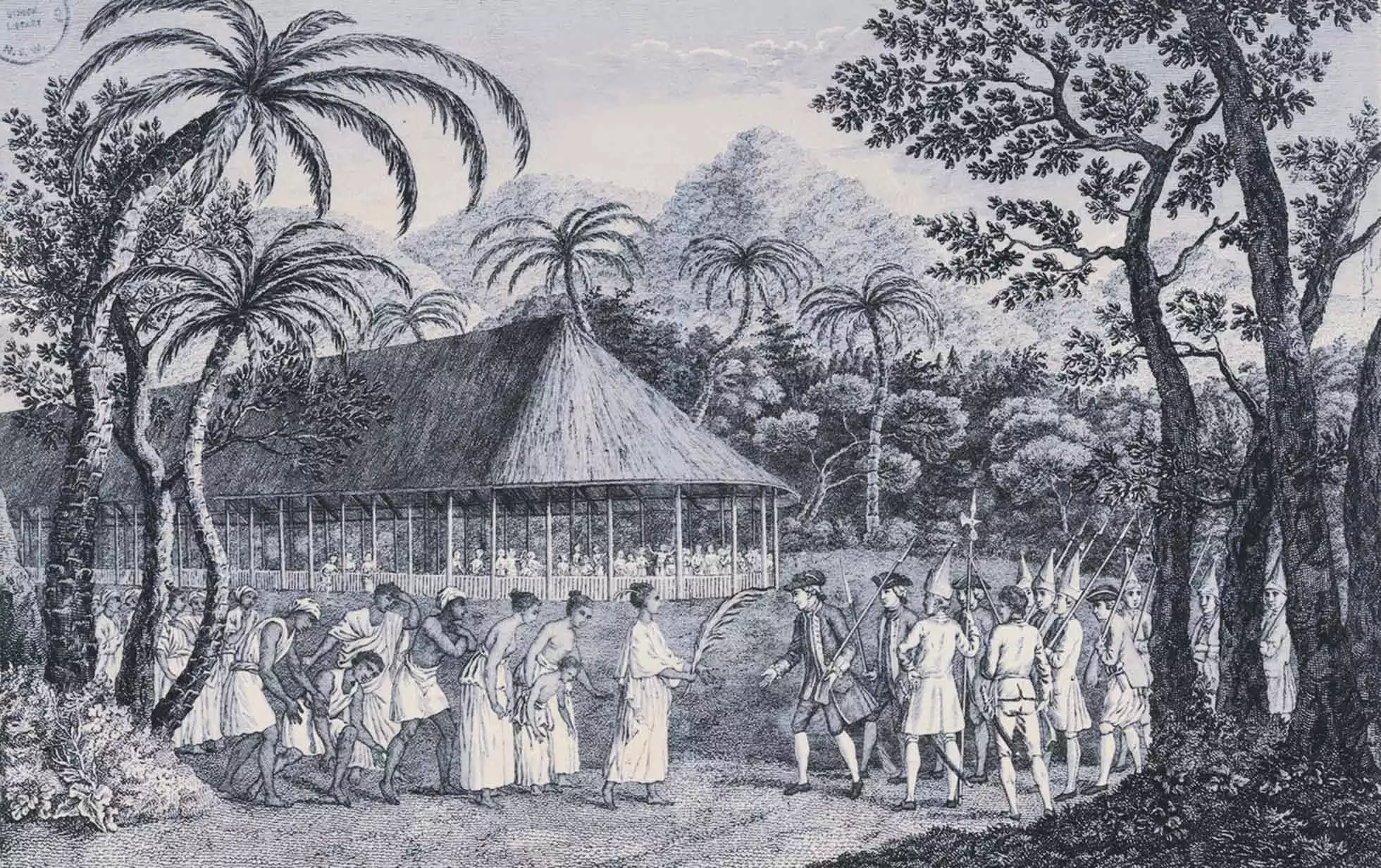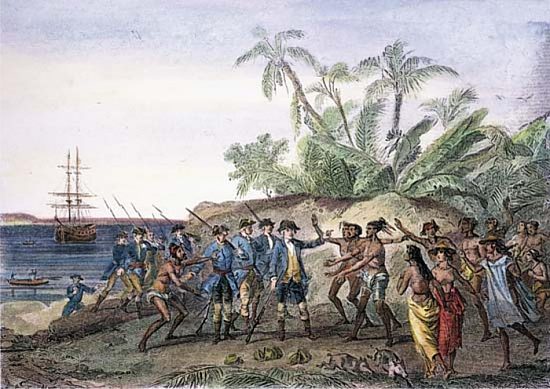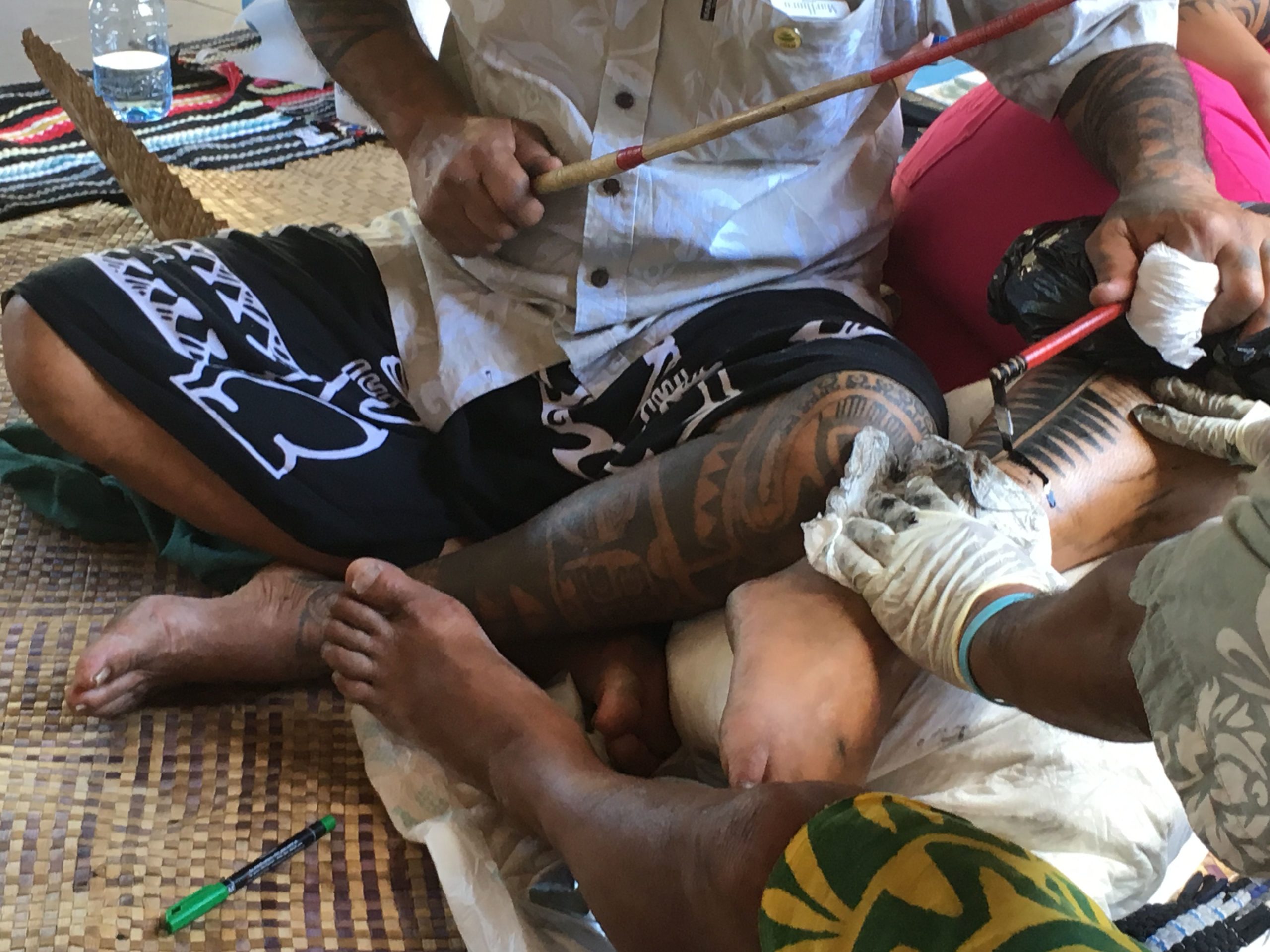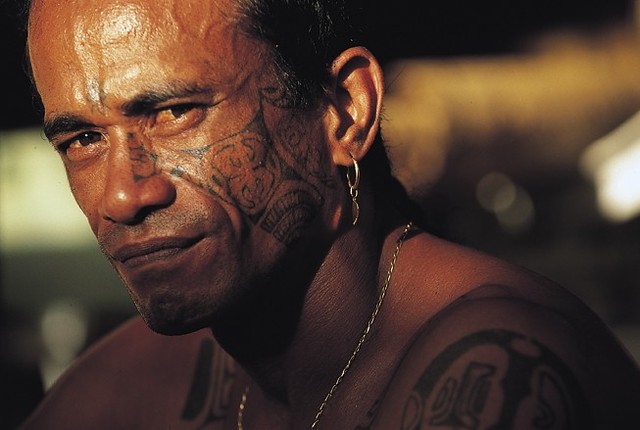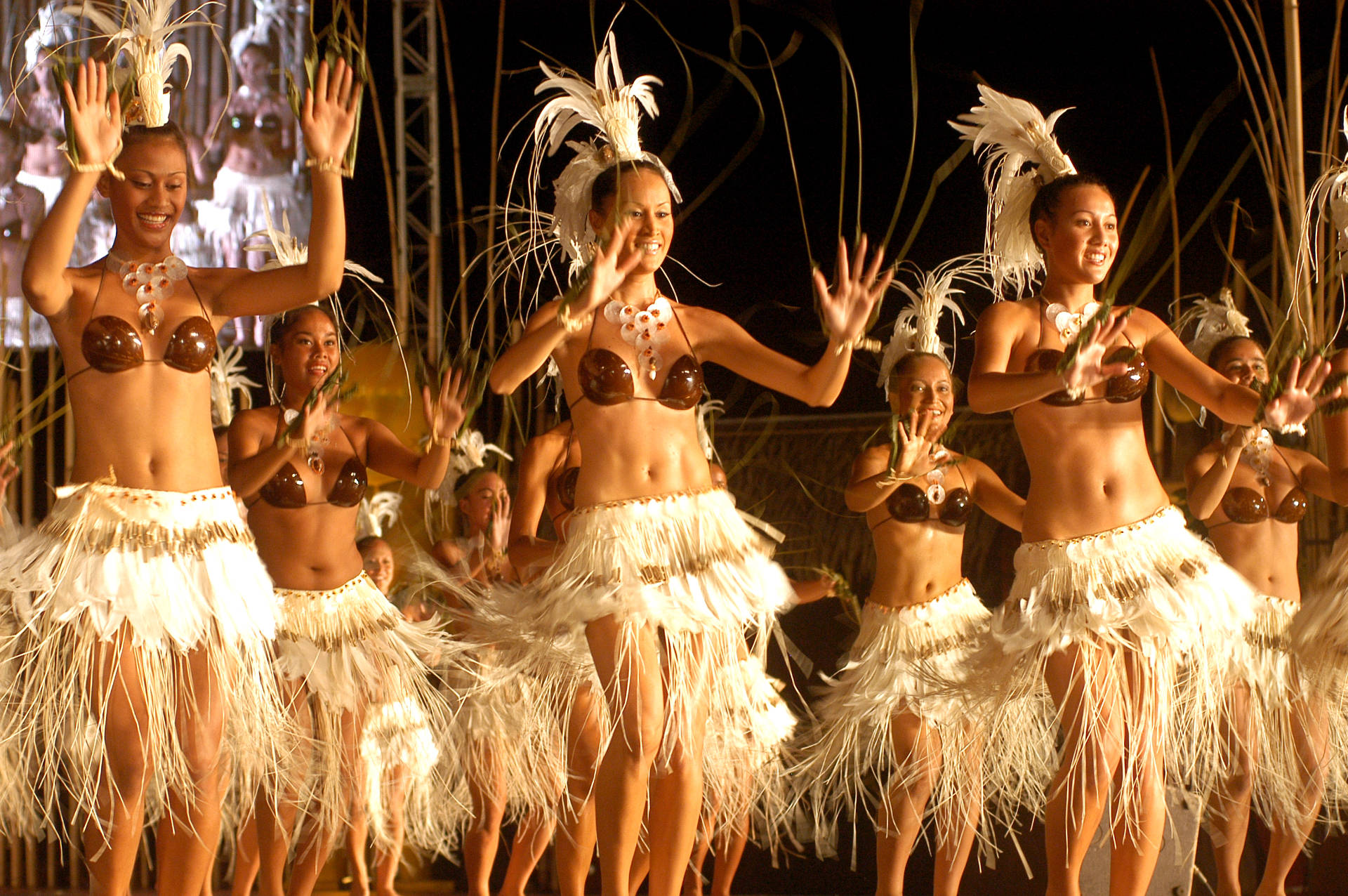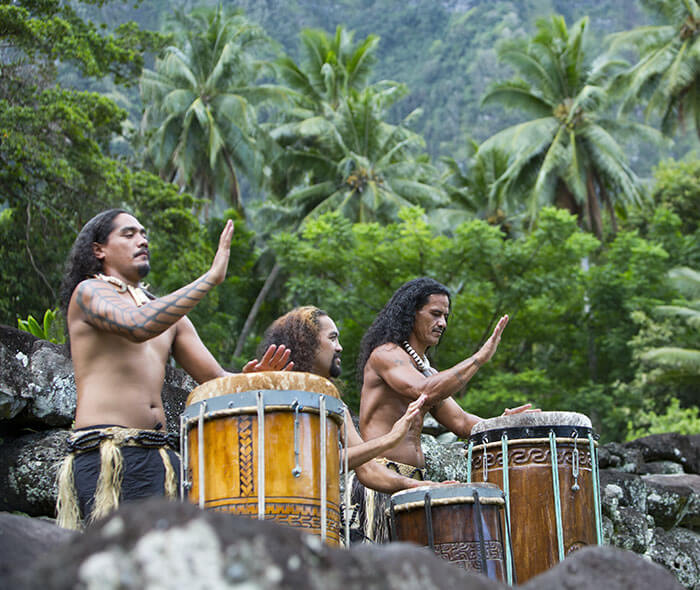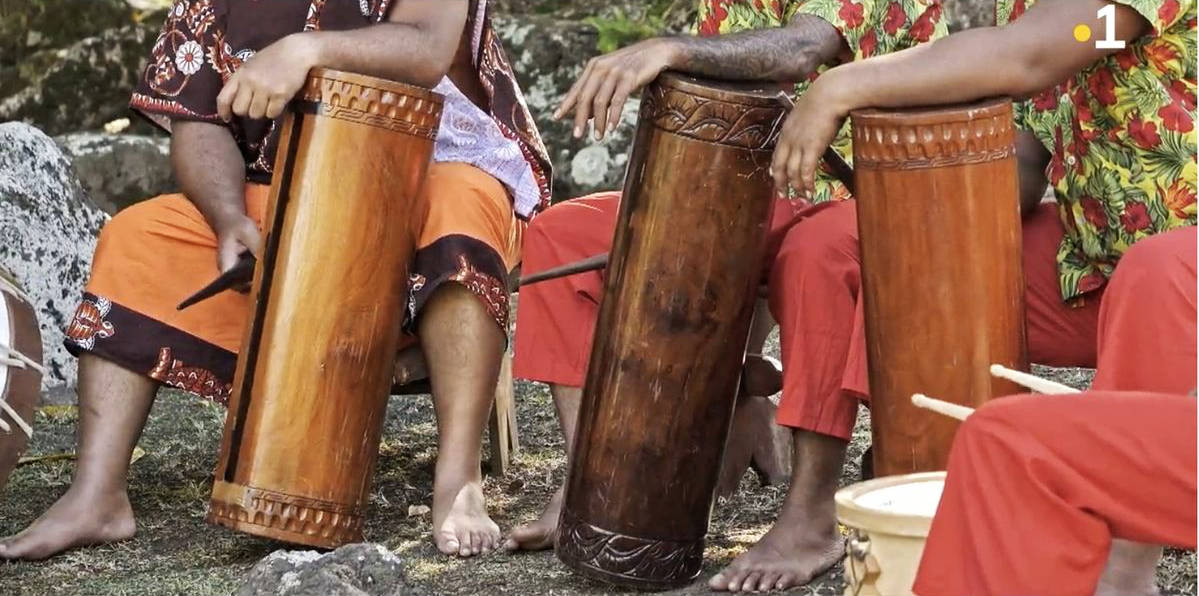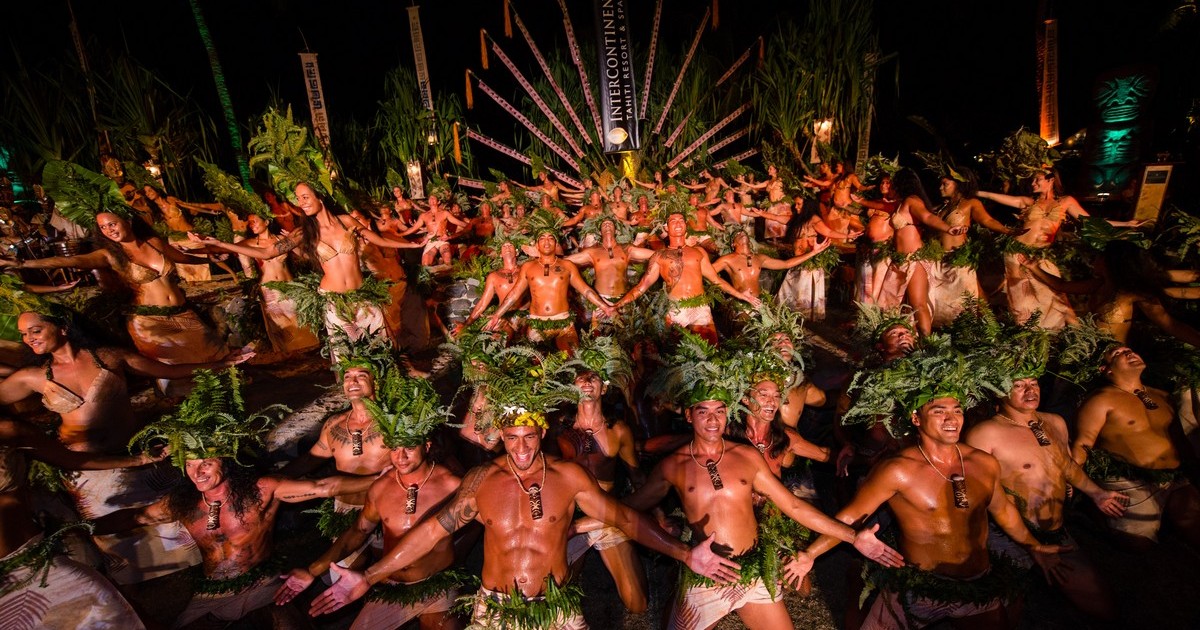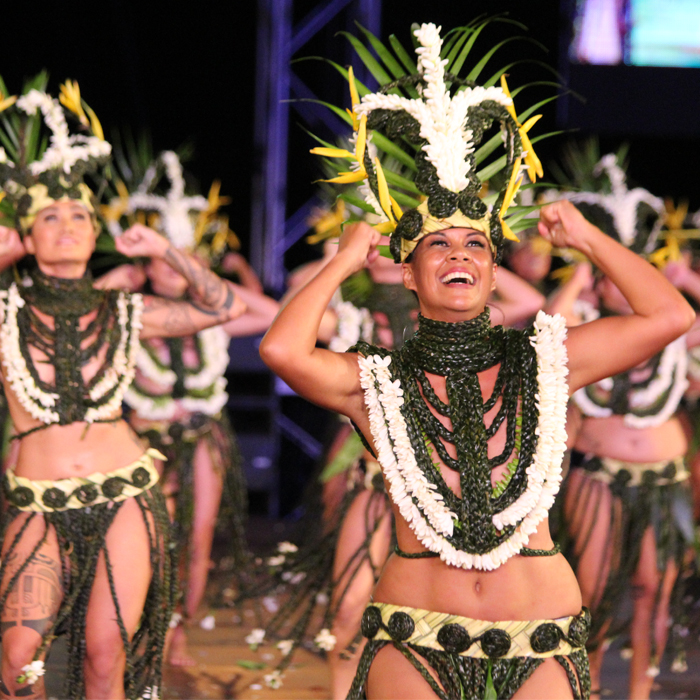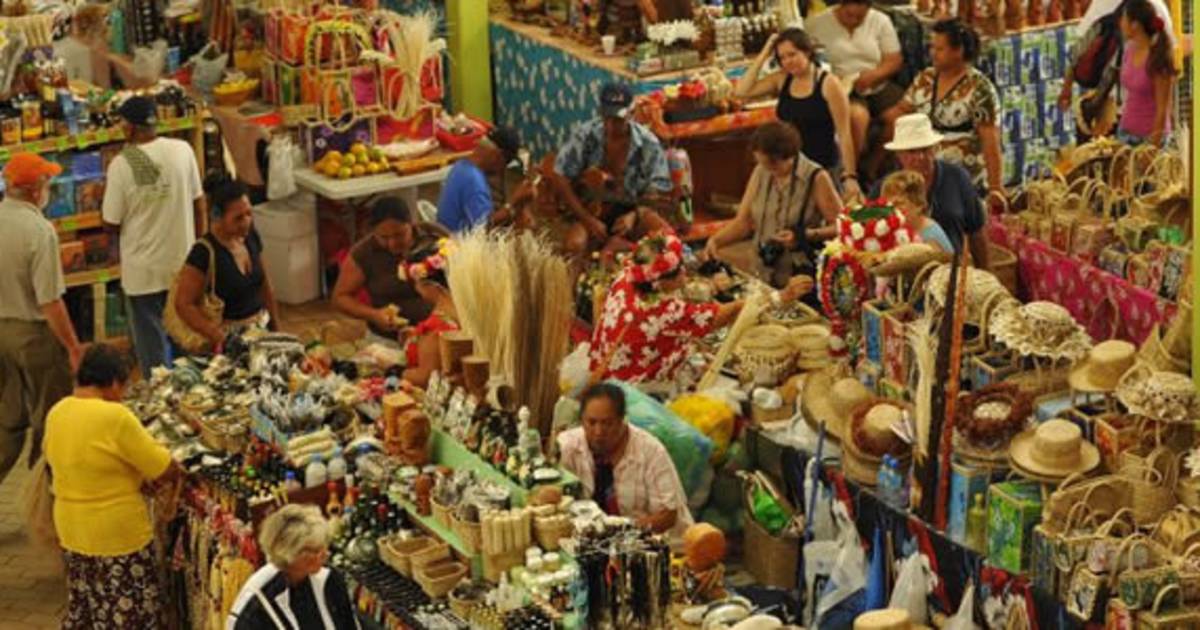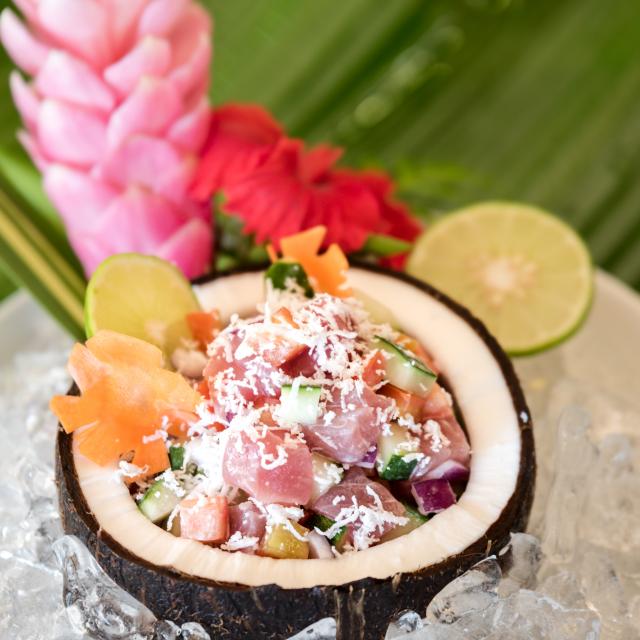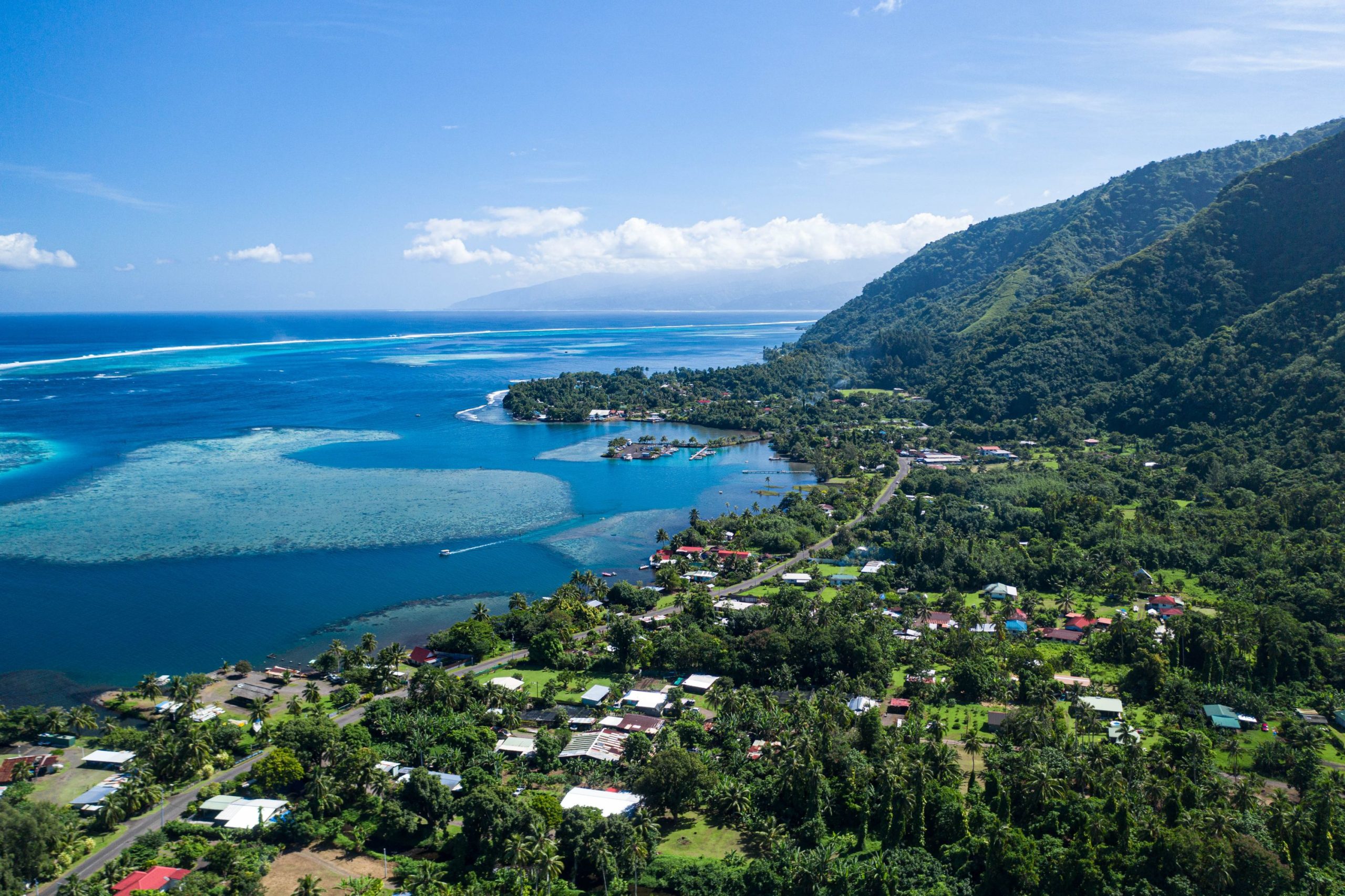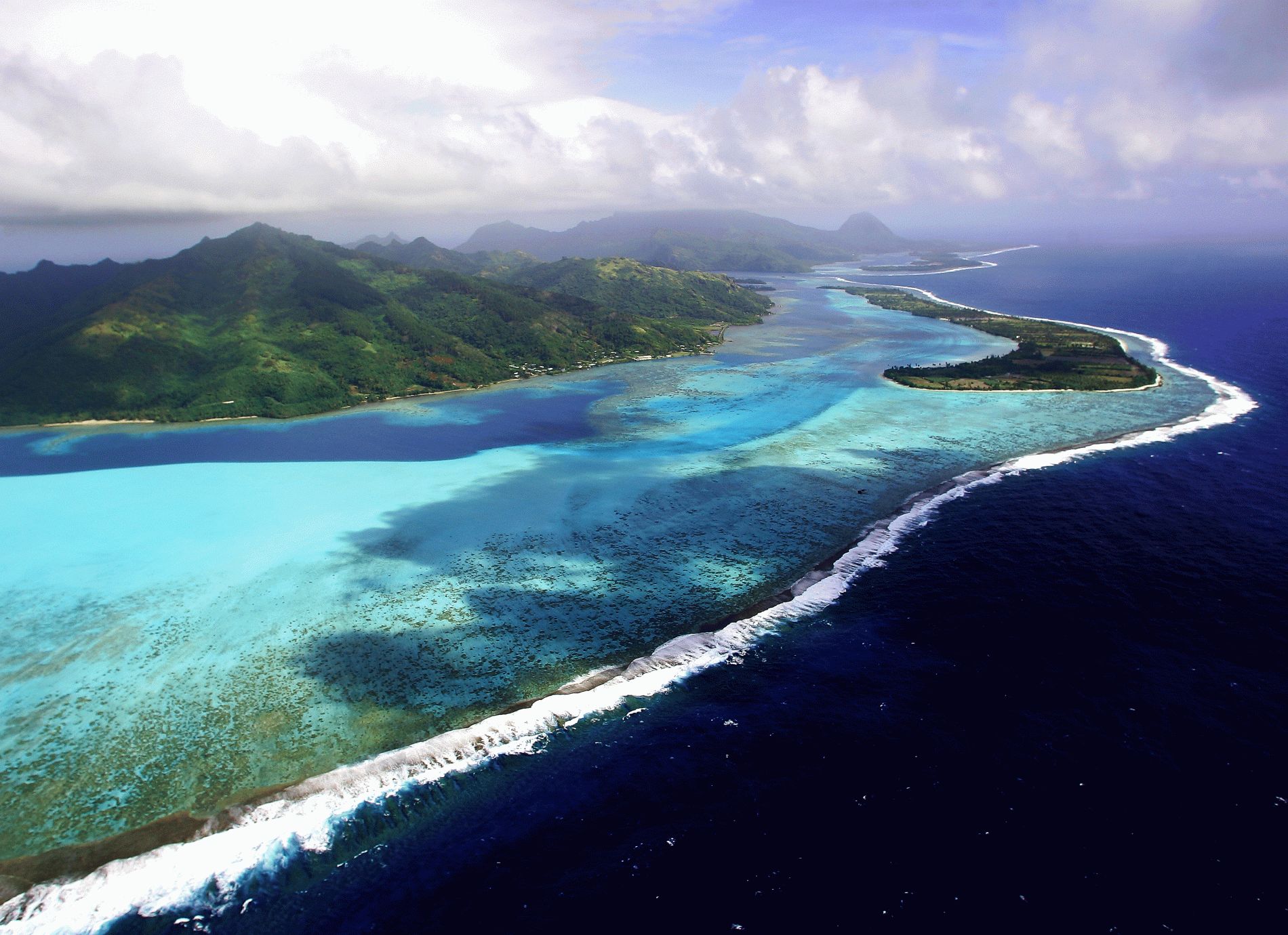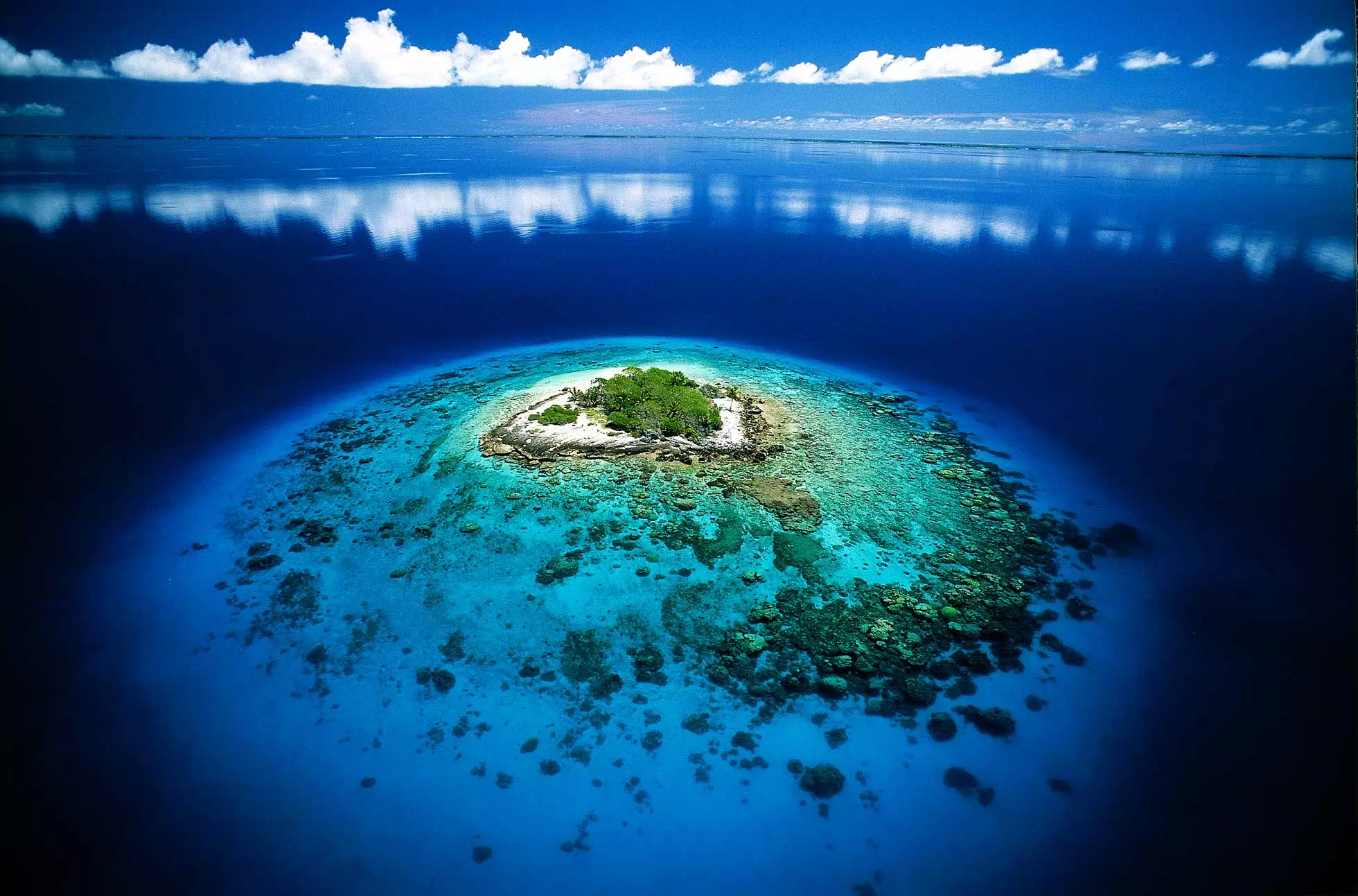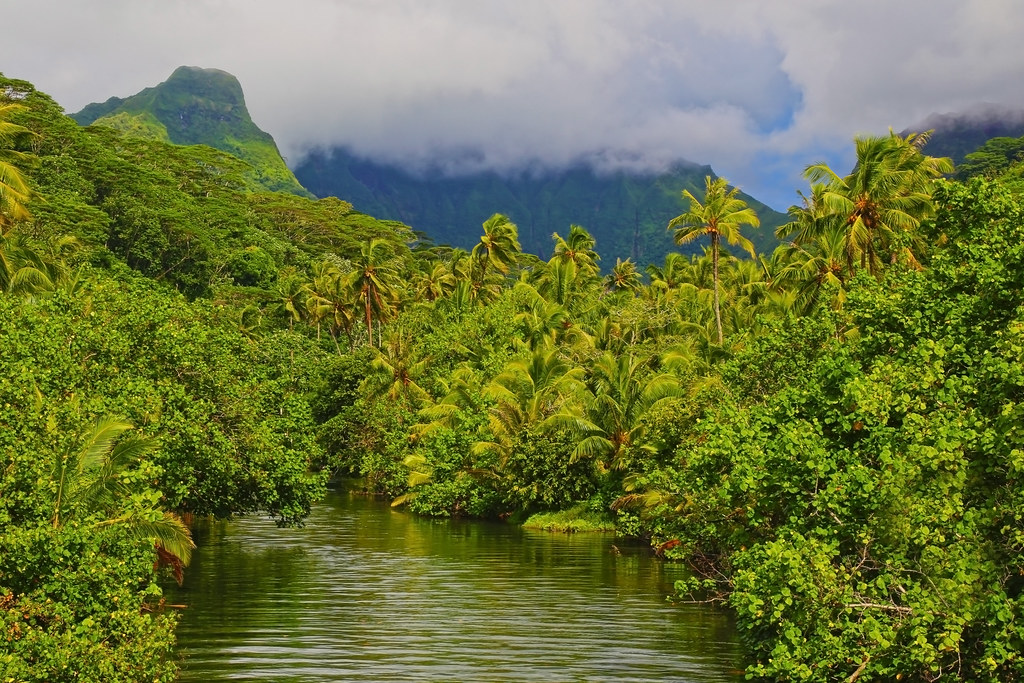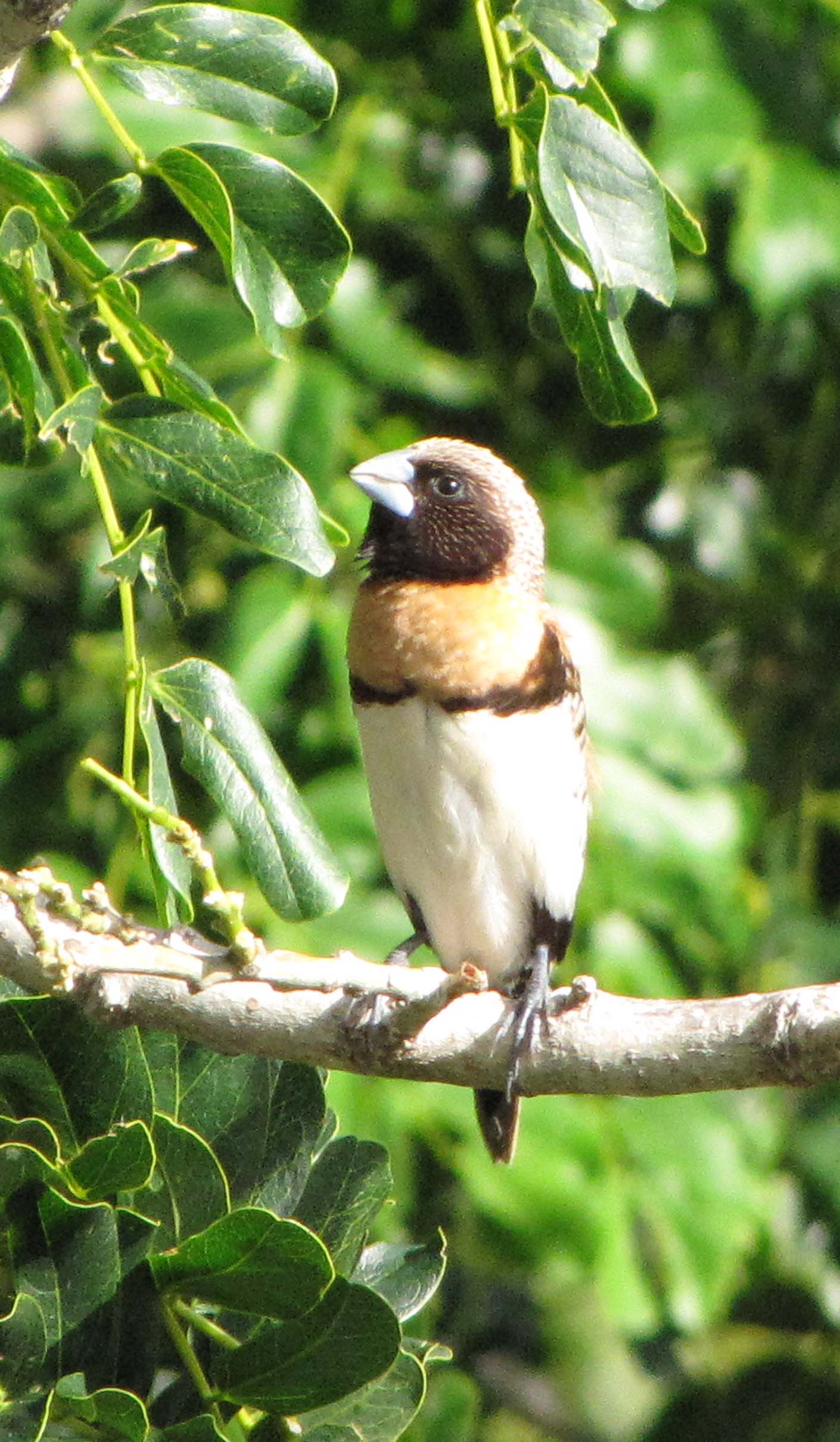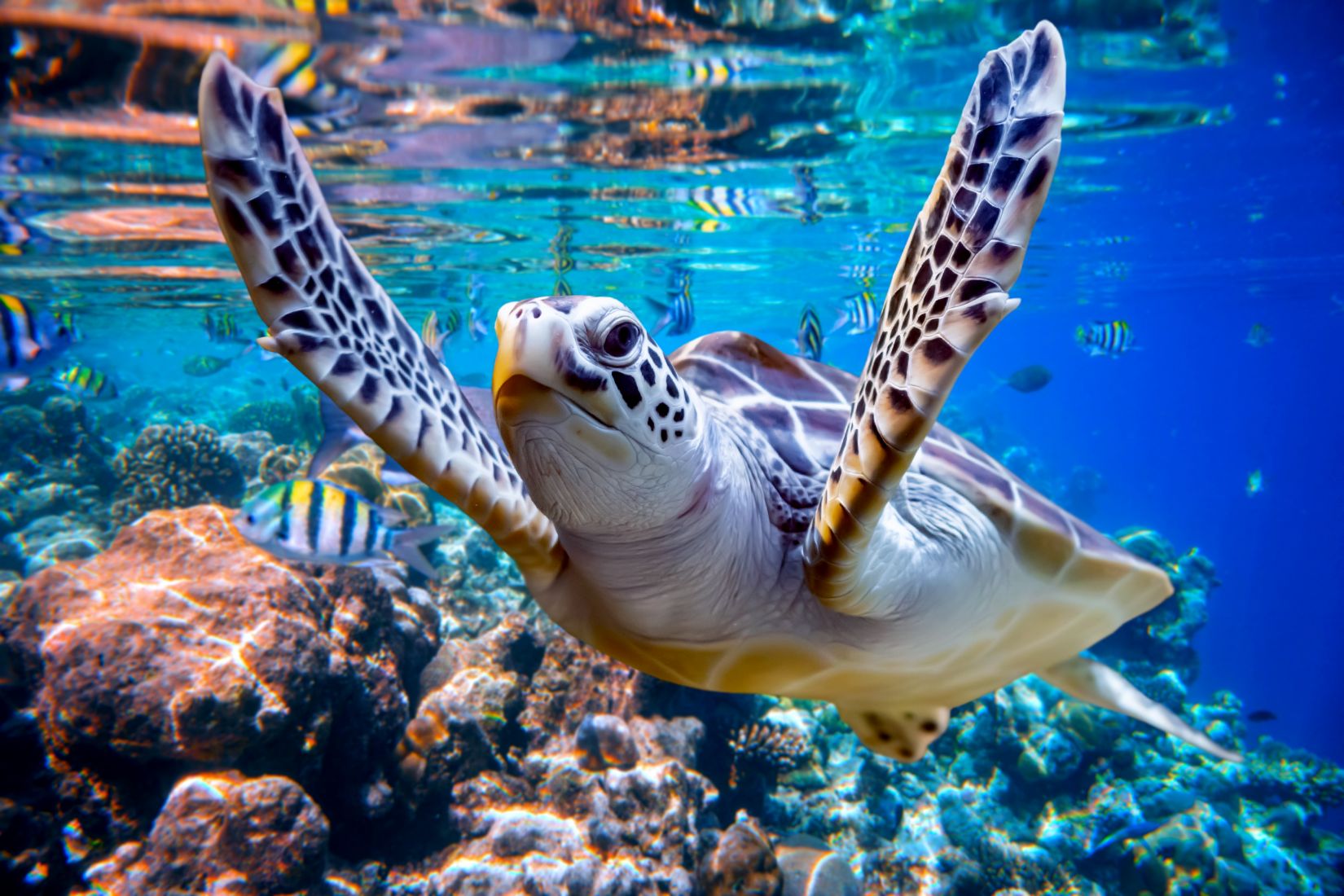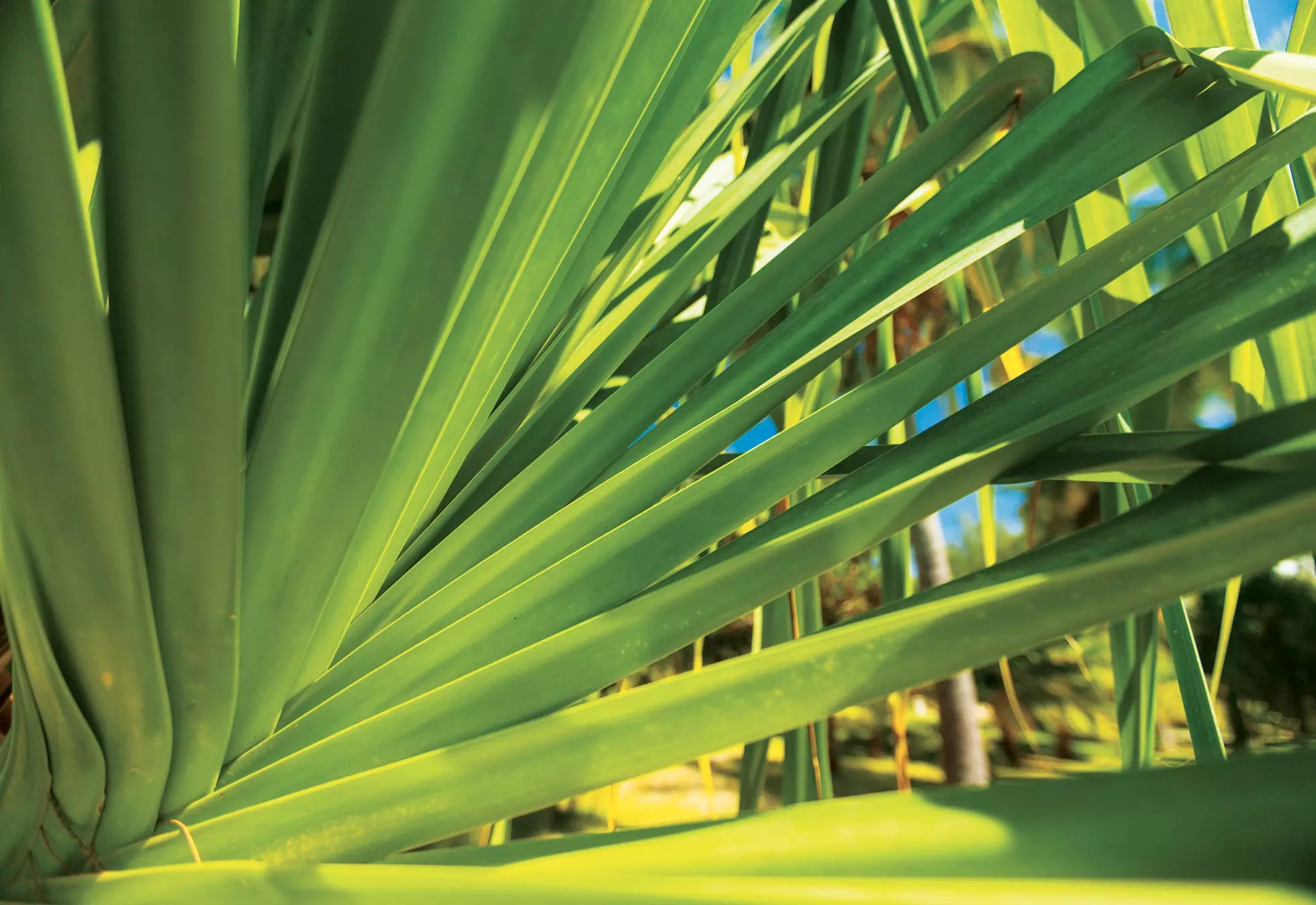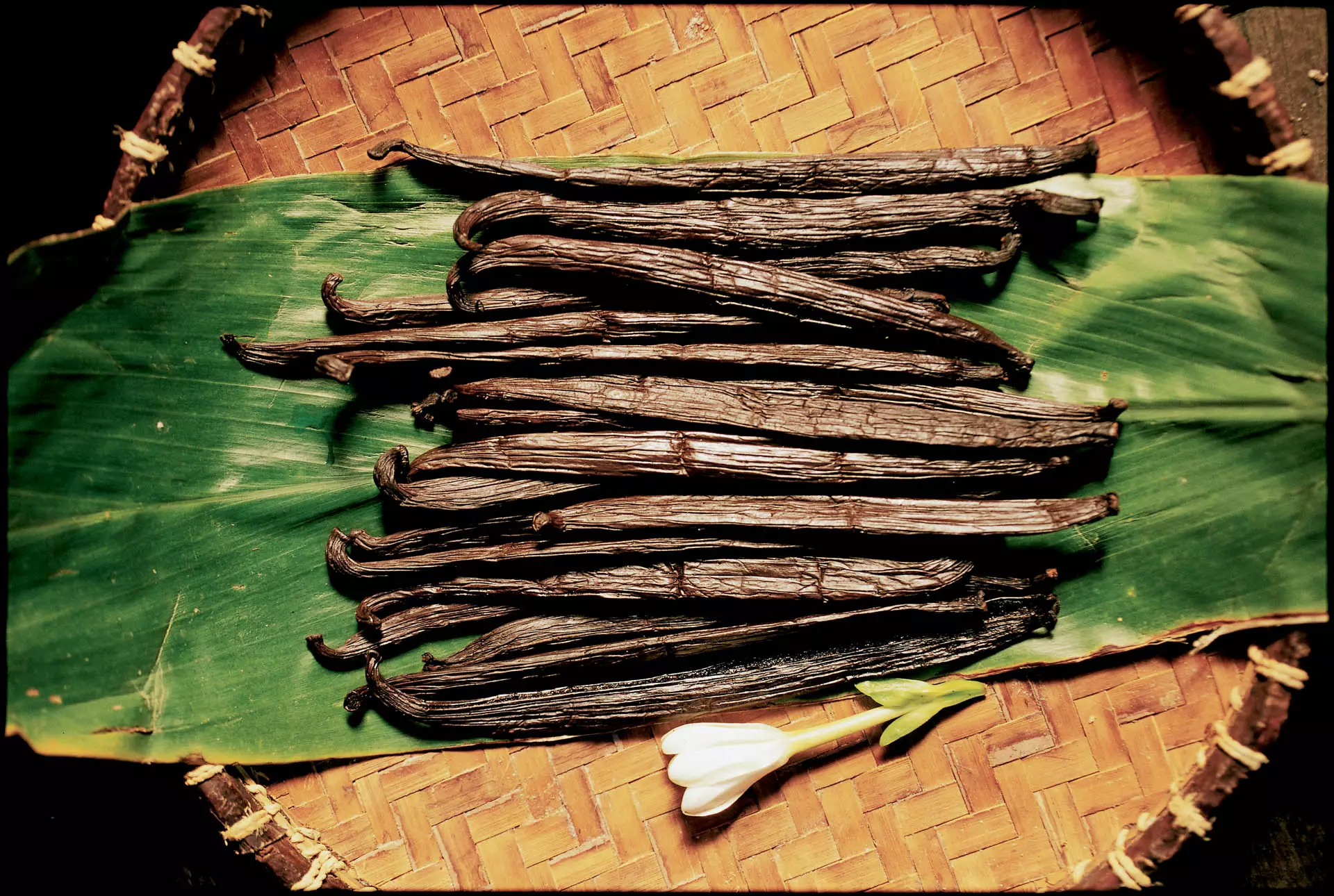Tahiti and its islands
The Islands of Tahiti are a true tropical paradise, offering visitors an escape to a world of pristine beaches, turquoise waters, and lush green mountains. Located in the South Pacific Ocean, this archipelago of 118 islands and atolls is known for its breathtaking natural beauty and rich Polynesian culture.
The main island of Tahiti, also known as the “Queen of the Pacific,” is the largest and most populated of the islands. It is home to the capital city of Papeete, where visitors can experience the hustle and bustle of a modern Polynesian city while also enjoying traditional markets and cultural sites.
The islands of Moorea, Bora Bora, and Raiatea are also popular destinations in the archipelago. Moorea, located just a short ferry ride from Tahiti, is known for its lush green mountains, secluded coves, and laid-back vibe. Bora Bora, with its stunning overwater bungalows and crystal-clear lagoon, is a dream destination for honeymooners and luxury travelers. Raiatea, the second-largest island in the archipelago, is known for its rich Polynesian history and archaeological sites.
Aside from these popular islands, the Islands of Tahiti also offer a range of lesser-known destinations, each with its unique charm. The Tuamotu atolls, for example, are a collection of coral atolls known for their excellent diving and snorkeling opportunities. The Marquesas Islands, located in the northern part of the archipelago, are a remote and rugged destination known for their stunning landscapes and Polynesian art.
No matter which island you choose to visit, you will be greeted with warm hospitality and the unmistakable rhythm of Polynesian culture. The people of the Islands of Tahiti are proud of their unique heritage, which is reflected in their music, dance, art, and cuisine.
Visitors can experience Polynesian culture by attending traditional dance performances, visiting museums and cultural centers, and participating in workshops where they can learn about local arts and crafts. The island’s cuisine is also a must-try experience, with fresh seafood, tropical fruits, and traditional dishes like poisson cru (raw fish marinated in coconut milk and lime juice).
In conclusion, the Islands of Tahiti are a true tropical paradise that offers visitors a unique and unforgettable experience. With its stunning natural beauty, rich Polynesian culture, and warm hospitality, the Islands of Tahiti are a dream destination for travelers seeking an escape to a world of relaxation, adventure, and cultural immersion.
Tahiti’s history
Tahiti’s history is as vibrant and colorful as the island itself. The Polynesian people who first settled on the islands arrived over 2500 years ago, long before European explorers discovered the island in the 16th century. These Polynesian settlers brought with them a rich culture and traditions that still influence life on the islands today.
European explorers, including British navigator Samuel Wallis and French explorer Louis-Antoine de Bougainville, first arrived on Tahiti’s shores in the 18th century. They were greeted by the friendly Polynesian people, who welcomed the new visitors to their island home. The explorers soon realized that the island’s strategic location in the South Pacific made it an ideal stopover point for ships traveling between Europe and Asia.
In the 19th century, French missionaries arrived on Tahiti and began to convert the local population to Christianity. French influence on the island grew, eventually leading to the colonization of Tahiti by France in 1880. Despite French colonization, the Polynesian people have continued to maintain their unique culture and traditions, with many of their customs still practiced today.
After World War II, Tahiti became an overseas territory of France, and in 2003, it became an autonomous overseas country of the French Republic. This new status granted greater self-governance to the people of French Polynesia, including the ability to manage their own foreign relations and defense.
Today, Tahiti remains a stunning blend of Polynesian and French cultures. Visitors to the island can experience the rich history of the Polynesian people through traditional cultural performances and the island’s museums. At the same time, visitors can enjoy French-inspired cuisine and modern amenities that reflect the island’s contemporary way of life.
Tahiti’s history is a fascinating story of migration, exploration, colonization, and cultural preservation. The island’s unique blend of cultures and traditions makes it a truly special place, and visitors to Tahiti can experience this rich history firsthand.
Tahitian culture
Tahitian culture is a unique and vibrant blend of ancient Polynesian traditions and modern influences. The Polynesian people who first settled on the islands brought with them a rich culture and customs that still shape life on the islands today.
One of the most notable aspects of Tahitian culture is their artistry, which includes weaving, woodcarving, and tattooing. These traditional art forms are deeply rooted in the mythology and history of the Polynesian people. For example, the art of weaving, known as tifaifai, is used to create colorful, intricate quilts that tell stories through their patterns and designs. Woodcarving, known as tiki carving, is used to create intricate sculptures and other decorative items that reflect Polynesian culture and traditions.
Tattooing, or tatau, is a deeply ingrained aspect of Tahitian culture that dates back to ancient times. Tattoos were traditionally used to signify social status, and the designs often included symbols and patterns that represented the wearer’s identity, family, and history. Today, tattooing is still a significant aspect of Tahitian culture, with many locals and visitors alike opting to get traditional Polynesian tattoos as a symbol of their connection to the island and its heritage.
Another important aspect of Tahitian culture is their connection to nature. The Polynesian people have always had a deep respect for the natural world, which is reflected in their mythology and traditional practices. For example, the ancient Polynesians believed that everything in the natural world had a spirit or mana, and they made offerings and performed rituals to honor and appease these spirits. Today, this connection to nature is still evident in the island’s traditions, such as the annual Heiva festival, where locals come together to celebrate Tahitian culture through music, dance, and traditional sports.
In conclusion, Tahitian culture is a rich and vibrant tapestry of ancient Polynesian traditions and modern influences. From their artistry to their connection to nature, the people of Tahiti continue to celebrate and honor their unique heritage in a variety of ways. Visitors to the island can experience this rich culture firsthand through traditional performances, workshops, and cultural tours, providing a deeper understanding and appreciation of the island’s people and their way of life.
The people of Tahiti
The people of Tahiti, known as Tahitians, are the heart and soul of the island’s culture and way of life. They are a proud and welcoming people, who place great value on their customs and traditions.
Tahitians are known for their love of art, song, and dance, which are all deeply intertwined with their cultural heritage. Through these creative expressions, they are able to tell stories and share their history and beliefs with others. Visitors to the island can witness the beauty of Tahitian culture firsthand through traditional performances, such as the Heiva festival, where locals showcase their talents in music, dance, and traditional sports.
One of the defining characteristics of the Tahitian people is their innocent and carefree spirit. Their philosophy, aita pea pea, which means “not to worry,” reflects their relaxed and laid-back way of life. This outlook on life is rooted in their deep connection to nature and their belief in the importance of living in harmony with the world around them.
Tahitians are warm and welcoming to visitors, and take great pride in sharing their culture and way of life with others. They are known for their hospitality, and visitors to the island are often greeted with a warm smile and a friendly “ia orana,” which means “hello” in Tahitian.
In conclusion, the people of Tahiti are the guardians of their rich cultural heritage, and their love of art, music, and dance is a testament to their creativity and spirit. Their philosophy of aita pea pea reflects their relaxed and carefree way of life, and their warm and welcoming nature makes visitors feel right at home. Tahitians truly embody the beauty and charm of the island’s timeless traditions.
Tahitian Textiles
The textile traditions of Tahiti are deeply rooted in the island’s rich cultural history. Before the arrival of European missionaries, Polynesian clothing was traditionally made from tapa cloth, a material woven from dried pandanus leaves, coconut fibers, and breadfruit bark. The local women at that time wore a single garment called a pareo, which was wrapped around their waist.
Today, the pareo has become an iconic symbol of Tahitian fashion and is made from colorful, dyed fabric. It is a versatile article of clothing that can be worn by both men and women in a variety of ways, including as a skirt, dress, shawl, or even a headscarf. The vibrant designs and patterns of the pareo reflect the island’s natural beauty, with motifs inspired by tropical flowers, sea creatures, and other elements of nature.
The arrival of European missionaries in the 19th century brought about significant changes to Tahitian textile traditions. The missionaries introduced fabric to the islands, which quickly became a popular alternative to tapa cloth. They also taught the local women the art of patchwork, which gave rise to the creation of the tifaifai quilt.
Today, the tifaifai quilt is a beloved symbol of Tahitian culture, and is often given as a gift during weddings or other important events. The quilts are handmade by local women, affectionately known as Tahitian “mamas,” and are characterized by their intricate floral appliqué designs. Each tifaifai is a unique work of art, reflecting the maker’s personal style and love of nature.
In conclusion, the textile traditions of Tahiti are a beautiful reflection of the island’s rich cultural heritage. From the traditional tapa cloth to the modern pareo and tifaifai quilt, these textiles represent the creativity, resourcefulness, and love of nature that is deeply ingrained in the Tahitian way of life.
Tahitian Music
Music is a fundamental part of Tahitian culture and is celebrated throughout the islands. The traditional music of Tahiti is characterized by its fast-paced tribal rhythms, which are produced by a range of percussion instruments.
One of the most iconic instruments in Tahitian music is the pahu, a wooden drum that is traditionally covered in sharkskin. The pahu produces a deep, resonant sound and is often played alongside the toere, a long cylindrical drum with a split down the side that produces higher pitched percussion. Together, these two instruments create a powerful and dynamic rhythm that is integral to Tahitian music.
Other traditional instruments used in Tahitian music include the pu, or conch shell, which is blown to produce a loud, deep sound that is often used to signal the start of a performance or ceremony. The vivo, or nose flute, is another important instrument that produces a hauntingly beautiful sound when played. Finally, the ukulele is a more recent addition to Tahitian music, having been introduced by Hawaiian settlers in the early 20th century. Today, it is a popular instrument in Tahitian music, often used to accompany songs and dances.
In addition to traditional music, Tahiti also has a vibrant contemporary music scene, with many talented musicians and singers producing a range of styles and genres, from reggae to pop. Many of these artists draw inspiration from traditional Tahitian music, incorporating elements of the island’s unique musical heritage into their own compositions.
In conclusion, music is an essential part of Tahitian culture, and the traditional music of the islands is both powerful and beautiful. From the deep, resonant rhythms of the pahu and toere to the hauntingly beautiful sound of the vivo, Tahitian music is a celebration of the island’s rich cultural heritage and a testament to the enduring spirit of its people.
Tahitian Dance
Tahitian dance is a stunning visual representation of the islands’ cultural heritage. This dynamic and energetic art form is deeply rooted in Polynesian history and is still an essential part of daily life in Tahiti.
The traditional Tahitian dance is known as the ‘ote’a’ and is performed by both men and women. It involves fast-paced hip shaking movements, accompanied by the resounding beats of the traditional Tahitian drums, the pahu and the toere. The dancers’ costumes are typically colorful and vibrant, with floral adornments and traditional grass skirts.
In addition to the ‘ote’a’, there is another popular Tahitian dance known as the ‘aparima’. Unlike the fast and energetic movements of the ‘ote’a’, the ‘aparima’ is a slower, more graceful dance that tells a story through hand gestures and subtle movements.
Tahitian dance is more than just an art form – it is a powerful expression of the island’s cultural heritage. The movements and rhythms of the dance are steeped in Polynesian mythology and tell stories of love, nature, and the islands’ enduring relationship with the sea.
Today, Tahitian dance is enjoyed by locals and visitors alike and is often performed at cultural events and festivals throughout the islands. Many visitors to Tahiti choose to attend a traditional Polynesian dance performance, which is a captivating and unforgettable experience that showcases the beauty and vitality of this unique cultural art form.
In conclusion, Tahitian dance is a mesmerizing and captivating art form that reflects the island’s rich cultural heritage. From the fast and energetic movements of the ‘ote’a’ to the graceful gestures of the ‘aparima’, Tahitian dance is a celebration of life, love, and the enduring spirit of the Polynesian people.
Fresh Market in Tahiti
The experience of visiting a fresh market in Tahiti is truly a feast for the senses. The smells of tropical fruits such as mangoes, papayas, and pineapples mingle with the briny scent of freshly caught fish, creating an intoxicating aroma. The vibrant colors of the food and handmade crafts are like a visual feast for the eyes. It is a true immersion into the local way of life.
At the market, visitors can sample exotic fruits like rambutans, lychees, and starfruits, and taste the freshest seafood caught in the surrounding waters. The market also offers a chance to try local specialties like poisson cru, a dish made of raw fish marinated in lime juice and coconut milk, and cooked in the sun. For those with a sweet tooth, Tahitian vanilla is renowned worldwide for its unique flavor and is a must-try.
In addition to food, the market is a great place to find handmade crafts and souvenirs. Local artisans sell woven baskets, woodcarvings, and intricately designed pareos. Visitors can also watch as skilled craftspeople create intricate floral arrangements using exotic flowers like tiare and frangipani.
A visit to the market is not just about the food and crafts, but also about the people. The friendly locals are always happy to chat and share their culture and traditions with visitors. It is a great opportunity to learn more about Tahiti and its people, and to get a taste of the island’s vibrant and diverse culture.
Overall, a visit to Tahiti’s fresh markets is an experience not to be missed. It is an opportunity to sample some of the freshest and most delicious food, to find unique souvenirs and crafts, and to immerse oneself in the local culture.
Polynesian Cuisine
In addition to poisson cru, there are several other dishes that represent the flavors of Tahiti. One such dish is fafa, a meat and taro leaf stew that is rich and hearty. Another dish is mahi mahi, which is a type of fish that is often grilled or baked and served with a side of rice and fresh vegetables. The national dish of French Polynesia is roulotte, a savory crepe filled with a variety of ingredients such as ham, cheese, egg, and vegetables.
Dining in Tahiti is not only about the food, but also the atmosphere. Many restaurants offer breathtaking views of the turquoise lagoon, allowing diners to enjoy their meal while admiring the stunning surroundings. Some restaurants even offer traditional Polynesian dance performances and live music to add to the dining experience.
Of course, no meal is complete without dessert. One of the most popular desserts in Tahiti is po’e, which is made from mashed bananas, grated coconut, and vanilla. This sweet and creamy dessert is often served cold and is the perfect way to end a delicious meal.
Overall, the cuisine of Tahiti is a fusion of French and Polynesian flavors, resulting in a unique and delicious culinary experience that reflects the island’s culture and traditions.
Natural Wonder
The natural beauty of the islands of Tahiti is simply breathtaking. With their crystal-clear waters, pristine beaches, and lush tropical landscapes, it’s no wonder that they are often referred to as paradise on earth. From the majestic peaks of Moorea to the stunning turquoise lagoons of Bora Bora, the islands are a wonder to behold.
The marine life surrounding the islands is equally impressive. The clear waters are home to a variety of colorful fish, dolphins, sharks, and even humpback whales during certain times of the year. Snorkeling and scuba diving are popular activities for visitors who want to experience the beauty of the underwater world.
The islands are also rich in flora and fauna. The vanilla plant, which is used in many Tahitian dishes, is grown on the islands, along with other tropical fruits and vegetables. The Tiare flower, which is the national flower of Tahiti, is a symbol of hospitality and is often used in traditional lei-making ceremonies.
The islands are also home to a variety of bird species, including the iconic Tahitian Monarch, which is found nowhere else in the world. Visitors can explore the lush forests and mountainous terrain to catch a glimpse of these rare and beautiful birds.
Overall, the islands of Tahiti are a natural wonder that must be experienced to be fully appreciated. The sheer beauty and diversity of the landscape are truly awe-inspiring and make it one of the most unique and memorable travel destinations in the world.
Polynesian Islands and Atolls
The formation of the islands of Tahiti is a fascinating geological process that has occurred over millions of years. The archipelagos consist of both high volcanic islands and low coral atolls. The high volcanic islands are formed through a series of underwater volcanic eruptions, gradually emerging from the depths of the ocean. As time goes by, these volcanic islands start to sink below the surface of the water, and the surrounding coral, which requires light to survive, grows upward and gradually separates from the subsiding island.
As the island sinks deeper, the coral continues to grow upward until it forms a complete ring around the submerged island, enclosing a lagoon within the coral islets, which is known as an atoll. The gradual sinking of the volcanic island is believed to be caused by a combination of factors, including tectonic plate movement, erosion, and subsidence due to the weight of the island itself.
Rangiroa is a prime example of this phenomenon, being one of the largest atolls in the world. Located in the Tuamotu Archipelago, Rangiroa boasts an incredibly rich marine life and stunning coral reefs that attract divers and snorkelers from all over the world.
Bora Bora, on the other hand, is a partially submerged volcanic island that could be considered a partial atoll. While the center of the island is still above water, the lagoon that surrounds it is enclosed by a ring of coral islets, providing visitors with breathtaking views of the crystal clear lagoon and the stunning Mount Otemanu in the distance.
Whether high volcanic islands or low coral atolls, the islands of Tahiti are truly a natural wonder that continue to inspire awe and wonder in those who visit them.
The hidden interiors of the islands of Tahiti
Exploring the hidden interiors of the islands of Tahiti is a must-do for anyone seeking adventure and natural beauty. While the stunning beaches and crystal-clear waters are undoubtedly the main attraction, the lush green valleys and towering peaks of the island interiors offer a glimpse into a wild and untamed landscape.
From the soaring Fautaua Falls on Tahiti to the tranquil natural pools and cascading waterfalls of Moorea, the inner valleys of these islands are truly a sight to behold. But exploring them can be challenging, as the rugged terrain and dense vegetation make them difficult to navigate on foot. However, there are plenty of ways to experience the natural wonders of the island interiors.
One popular option is to take a Jeep Safari tour, which will take you deep into the heart of the island, where you can explore remote valleys and swim in hidden waterfalls. These tours are led by knowledgeable guides who can offer insight into the local flora and fauna, as well as the rich history and culture of the islands.
Another great way to explore the island interiors is by canoe or kayak. The Faaroa River on Raiatea is a particularly popular destination, as it is the only navigable river in French Polynesia. Paddling along the river, you’ll pass through lush jungle scenery and encounter a variety of wildlife, including birds and lizards.
Whether you choose to explore the hidden interiors of the islands on foot, by Jeep, or by water, you’re sure to be amazed by the natural beauty and diversity of these incredible landscapes. From towering waterfalls to tranquil pools, winding rivers to dense jungle, the islands of Tahiti are a true paradise for nature lovers and adventurers alike.
The mountains in Tahiti and its surrounding islands
The mountains in Tahiti and its surrounding islands are a spectacular sight to behold. Rising sharply from the lush interiors of the volcanic islands, they offer panoramic views that are truly breathtaking. Hiking up to the peaks of these mountains is a popular activity among visitors and locals alike, offering a unique and immersive experience in the natural beauty of the islands.
In addition to their natural beauty, these mountains also hold significant cultural and historical importance. Ancient Polynesian culture often attributed myths and legends to explain the unique shapes of the peaks. For example, Mount Mouaputa on Moorea is said to have a hole in its center due to a spear thrown by the demi-god Pai chasing a giant eel. The island of Huahine is known for its silhouette of a pregnant woman, which can be seen from certain angles.
For those who want to experience the mountains in a more leisurely way, there are also opportunities to take scenic drives or even helicopter tours to admire the stunning landscapes from above. The views of the jagged peaks rising above the lush greenery and crystal-clear waters are sure to be a highlight of any visit to the islands of Tahiti.
Fauna
French Polynesia is home to a rich variety of wildlife, especially birds. The islands provide a unique ecosystem that supports over one hundred species of birds, each with its own distinct characteristics and habits. Coastal birds, such as boobies, tropicbirds, and terns, can be found along the shores of the islands. They feed from the lagoon but roost on land. These birds are graceful and agile, and their bright plumage adds to the natural beauty of the islands.
Shore birds, such as Pacific heron, golden plovers, and tattlers, are seasonal migratory species that visit the islands to breed and feed. These birds are adapted to living on the shore, and their behavior and appearance are shaped by their environment. They are known for their long beaks and legs, which help them to hunt for food and navigate the sandy shorelines.
In addition to coastal and shore birds, the islands of French Polynesia are also home to a variety of land birds. These include the reed warbler, the rare Marquesas kingfisher, and the colorful ultramarine lorikeet. Each of these species has its own unique features and adaptations that allow them to thrive in their island habitat.
One of the most remarkable places to observe the birdlife of French Polynesia is Tikehau, which is home to the largest colony of sea birds in the region. The island provides a natural aviary on its aptly named Bird Island, where visitors can witness a stunning array of bird species in their natural habitat. From the vibrant colors of the lorikeets to the majestic flight of the sea birds, French Polynesia offers a unique and unforgettable experience for birdwatchers and wildlife enthusiasts alike.
Fish
In addition to being a beautiful destination for sunbathing and relaxation, the islands of Tahiti offer incredible opportunities for underwater exploration. The clear and calm lagoon waters are teeming with marine life, making snorkeling and scuba diving some of the most popular activities in the region.
Divers can encounter a wide variety of fish species, including popular game fish such as tuna and snapper, as well as colorful tropical fish like parrotfish, angelfish, clownfish, butterfly fish, and triggerfish. More adventurous divers may also encounter larger species like manta rays, moray eels, and even reef sharks.
For those interested in sustainable tourism and marine conservation, some resorts and dive operators in Tahiti offer opportunities to participate in coral planting and restoration projects, allowing visitors to contribute to the protection and preservation of the delicate coral ecosystems.
The Flora of French Polynesia
The flora of French Polynesia is not only visually stunning but also has cultural significance. Many of these plants have been used for centuries for medicinal and culinary purposes, and their uses continue today.
The coconut palm tree is one of the most important plants in the Polynesian culture. The tree is used for everything from building materials to food and drink. The coconut fruit itself is used to make coconut milk, which is used in many dishes, and the coconut water is a refreshing beverage that is widely enjoyed. The tree’s leaves are used for weaving baskets, hats, and mats, while the trunk provides timber for building boats and houses.
Taro, a root vegetable similar to a potato, is another staple food in French Polynesia. It is used to make poi, a starchy paste that is a traditional Polynesian dish. The taro leaves are also used to wrap food, like a Polynesian version of a wrap or sandwich.
The noni plant, also known as the Indian mulberry, has been used for centuries for its medicinal properties. It is believed to have healing powers for a range of ailments, including infections, inflammation, and pain. The fruit of the noni plant is also used in traditional Polynesian medicine.
Other notable plants include breadfruit, which is a staple food in many Pacific Island cultures, and pandanus, which is used for weaving mats and baskets. The hala tree, or screw pine, produces large, spiky fruits that are used to make hats, mats, and even roofing.
Overall, the flora of French Polynesia is not only beautiful but also integral to the islands’ culture and way of life.
Tahitian vanilla
Tahitian vanilla is a prized crop that has become famous around the world for its unique aroma and taste. The vanilla orchid, which originated in Central America, was brought to Tahiti in the early 1800s. Over time, the Tahitian vanilla plant developed its own distinct characteristics, including larger, more plump beans that are filled with fragrant oils.
The process of cultivating Tahitian vanilla is a labor-intensive one. The flowers must be hand-pollinated, and each bean is harvested by hand when it is perfectly ripe. The beans are then cured, a process that involves drying and sweating the beans for several months until they develop their characteristic aroma and flavor.
Tahitian vanilla is used in a wide range of culinary applications, from desserts and pastries to savory dishes and beverages. In addition to its use in cooking, Tahitian vanilla is also used in perfumes, soaps, and other beauty products. Visitors to the islands can visit vanilla plantations to learn more about the cultivation process and sample some of the delicious products made with this prized ingredient.
Black Pearls
The process of producing black pearls is a labor-intensive and delicate one. It involves grafting a piece of mantle tissue from one oyster into another, stimulating the growth of a pearl. The oysters are then cared for meticulously for up to three years until the pearls reach maturity. The pearls are harvested by hand and then sorted by size, shape, and color. Only a small percentage of the pearls harvested meet the strict standards required to be classified as “gem quality.”
The art of black pearl farming has been passed down through generations of Polynesian families, who have perfected the craft over time. Visitors to French Polynesia can witness this process firsthand by visiting one of the many pearl farms on islands such as Raiatea, Huahine, and Taha’a. The farms often offer tours and demonstrations of the grafting process, as well as the opportunity to purchase exquisite black pearl jewelry.

